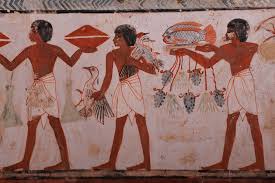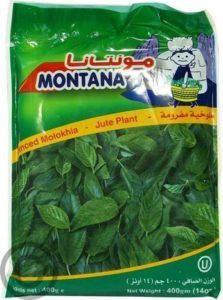A virtual trip to ancient Egypt via the story of a fascinating and delicious dish that has been eaten since the days of the pyramids.
story
Egypt Research Project
Getting resourceful for a 3rd grade research project in the time of COVID-19 quarantine, my daughter not only perused our bookshelves and huge stack of old National Geographic magazines, she also looked through our cookbook collection. Hoping to learn a bit about Egyptian culinary traditions, and maybe finding an easy dish she could make to give her a literal taste of the country. she struck gold in the “New Book of Middle Eastern Food” by Claudia Roden, finding the backstory and recipe for Melokheya. My daughter was excited to report she had not only found one of the national dishes of Egypt, but that it’s as old the pyramids.
You don’t need to be doing a research project to enjoy this easy, flavorful and versatile dish that will please even the pickiest eaters (via the deconstructed option, most likely).
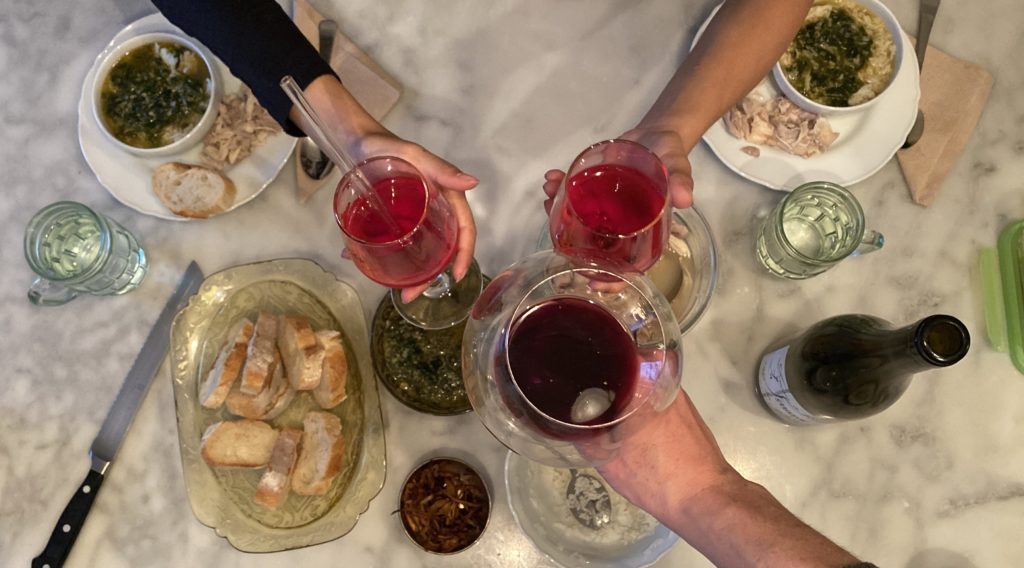
And for those of us still in home/online schooling mode, this virtual trip to ancient Egypt is not only fun, and delicious; it’s a fabulous multiplier. In the time it takes to cook, enjoy eating and talking about it, you’ve covered social studies, geography, history, math (cooking measurements!), English, spelling, music… and you’ve spent time together. None of us should be stressed about additional extra screen time right now, but we definitely shouldn’t be stressed about it after this fun dinner.
Enjoy your trip to ancient Egypt!
recipe
Melokheya
My daughter was familiar with Claudia Roden’s “New Book of Middle Eastern Food” because she’s used recipe for pita, and also helped me with plenty of others. Curious about Egyptian culinary traditions, she fount Egypt’s most popular national dish: Melokheya. It’s reported to be portrayed in paintings on tomb walls.
Claudia writes that the soup was eaten twice a day: the women would make it at home then carry it into the field in large pots for the midday meal of=the men working in the fields. In the evening, the men would return to enjoy it a second time at dusk.
The dish gets its name from the green leafy vegetable of the same name. Melokeheya is described to posses as mucilaginous (There’s your spelling bee word! And also a fun introduction to etymology for booger-loving kids) and glutinous quality.
You can find it in the freezer of middle eastern grocers (Or on Mercato. No relationship; just referencing.), but we only had spinach (quarantine!) and it worked well and was delicious.
As with many dishes with unique names in their native language, when translated into other languages, we get many versions of the spelling. In the book it is melokheya, but Google insisted on molokhia, and Wikipedia had mulukhiyah.
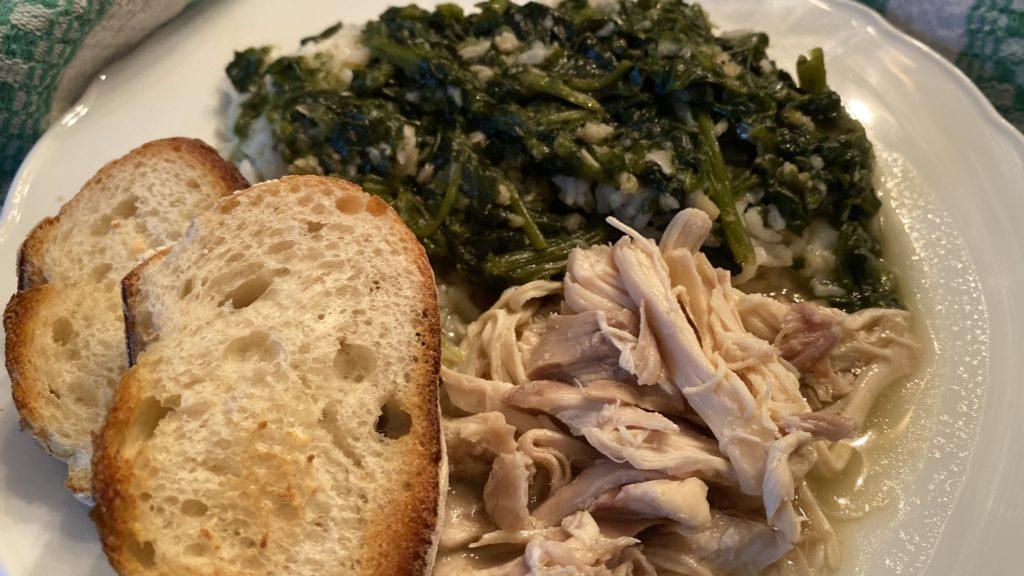
Melokheya (or Molokhia)
Ingredients
- 2 1/2 lbs bone-in chicken thighs, skins removed
- 1/3 tsp cardamom seeds (not pods!)
- 1 cup-sized onion, quartered
- 1 tsp salt
- fresh black pepper to taste
- 12 oz frozen chopped spinach recipe calls for frozen melokheya leaves
Takleya
- 12 cloves garlic, minced really, 12.
- 2 tbsp ground coriander
- 3 tbsp sunflower oil
- 1/4 tsp salt
- 1 pinch chili powder optional
For Serving
- plain rice
- toasted pita bread or baguette if that's what you have!
Instructions
Cook Chicken / Make Broth
- Skin chicken, and put it in a large pot. Add onion, cardamom and salt, and add water until chicken is just covered with water (almost 2 quarts). Bring the pot to a boil, then cover and turn heat down to a simmer. Continue to cook for 1 hour, skimming any scum that accumulates at the top.
- Meanwhile, mince the garlic, and prepare coriander, chili and salt for takleya.
Transform to Melokheya
- After an hour, remove the chicken and keep it aside in a bowl. Meanwhile, fish out the onions from the broth.
- The chicken should have cooled enough to touch it now. Pull it off the bone, shredding it to large bite-sizes, and then cover it with stock to keep moist. Keep aside, covered.
- Reheat the broth, and when boiling, add the frozen spinach, still frozen. Break up the spinach it up as it defrosts. When the boil resumes, turn down the heat to boil gently for 10 minutes. If using melokheya, don't overcook, lest the leaves sink to the bottom.
Takleya
- Make the After 8 minutes of the soup at a slow boil, heat a small fry pan over medium heat. When the pan is hot, add the oil. When the oil is hot, add the garlic and stir to combine, Continue cooking, stirring frequently until the garlic just begins to brown. Then add the salt and spices, and fry for another minute, until fragrant.
- It's now time for the ceremonial adding of the takleya to the soup! It will sputter and sizzle as the hot oil hits the water and that is intended! But be careful, also. Stir to combine and cook for 2 more minutes to meld flavors. That's it.
Serving
- Now is the fun part. You can eat it one of three ways.1) Eat the soup simply with plain rice or with fried or toasted pita.2) Eat the soup with portions of the chicken mixed in.3) Create a multi-layered version: toasted bread, topped with some rice and pieces of chicken, and the soup poured over all of it.
Notes
- We read that some people will use okra to help approximate the gelatinous texture that melokheya leaves give off. Though we had okra on hand (always), we did not opt to do this, and it tasted great.
- Claudia says to discard the onions, but I find them subtly tasty, reminiscent of the boiled onions of Thanksgiving tables in New England (not that I ate them as a kid, but I do now!).
music
A Novel Playlist
A novel idea in the time of the novel Coronavirus, today’s playlist is borrowed from a previous portrait, which includes this soundtrack for the novel Cigarette Number Seven by Donia Kamal.
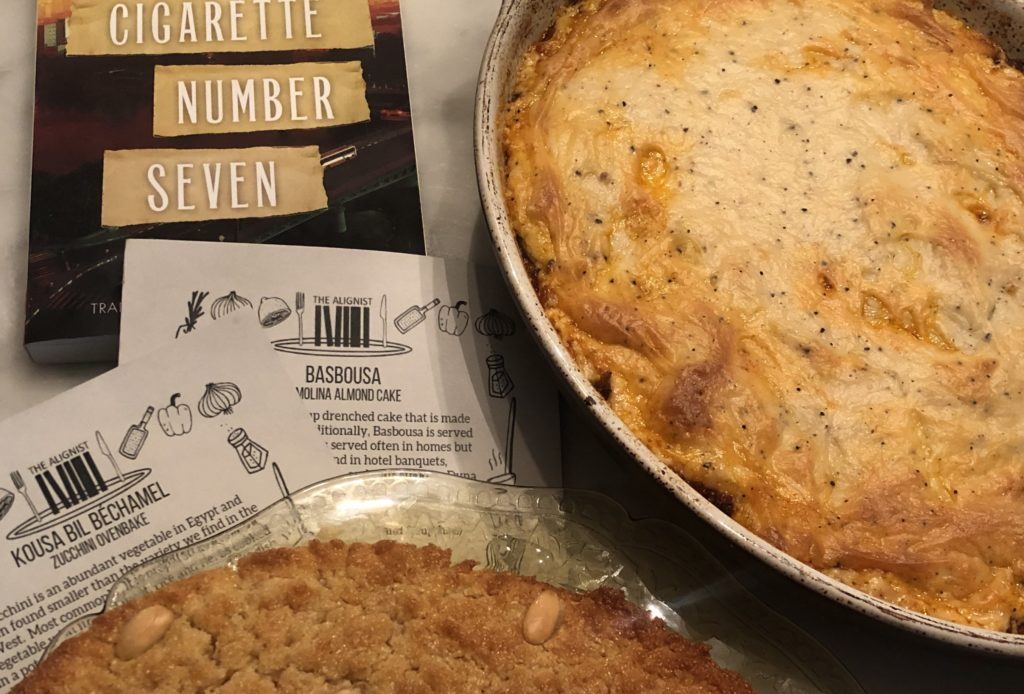
Ok, enough novelty! Wink, wink.
You’ll find this playlist has a ton of well-known and loved Egyptian musicians on it, as well as some western numbers. They are all part of the story told in the novel. To find out more, and to continue your Egypt exploration, head over to the portrait we made for that novel set in Cairo at the time of the Arab Spring.
To learn why this playlist starts with an ABBA tune, head over to the Cigarette Number Seven portrait!
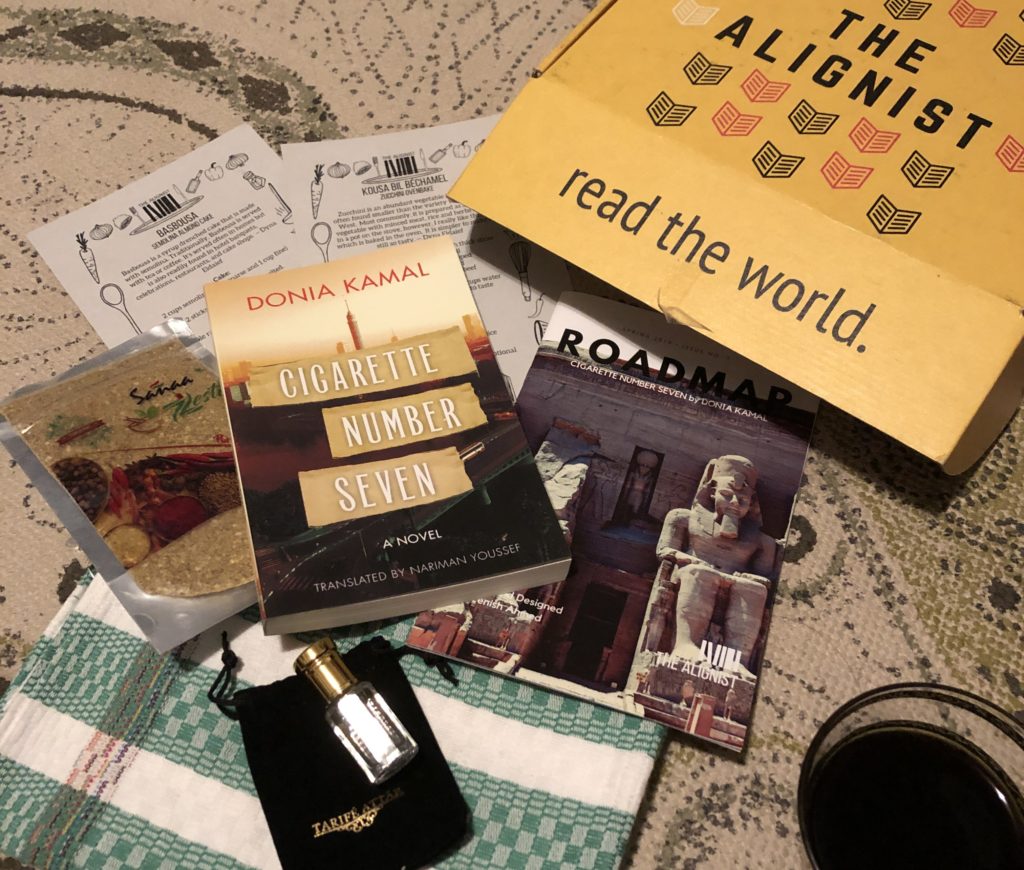
recipe
Connecting the Dots
What we found the most interesting is the method. In some ways, melokheya just one more variation on a classic chicken soup (of which we already have two variations on this site – Yemeni and Israeli – both of which are stuck in quarantine as they transition from the old site!).
But melokheya has extra flair added at the end, in the form of takleya, which is garlic and spices tempered in hot oil. Much like the tadka or tarka (or chaunk) we are familiar with in our Indian cooking, like the tadka added to tomato pappu.
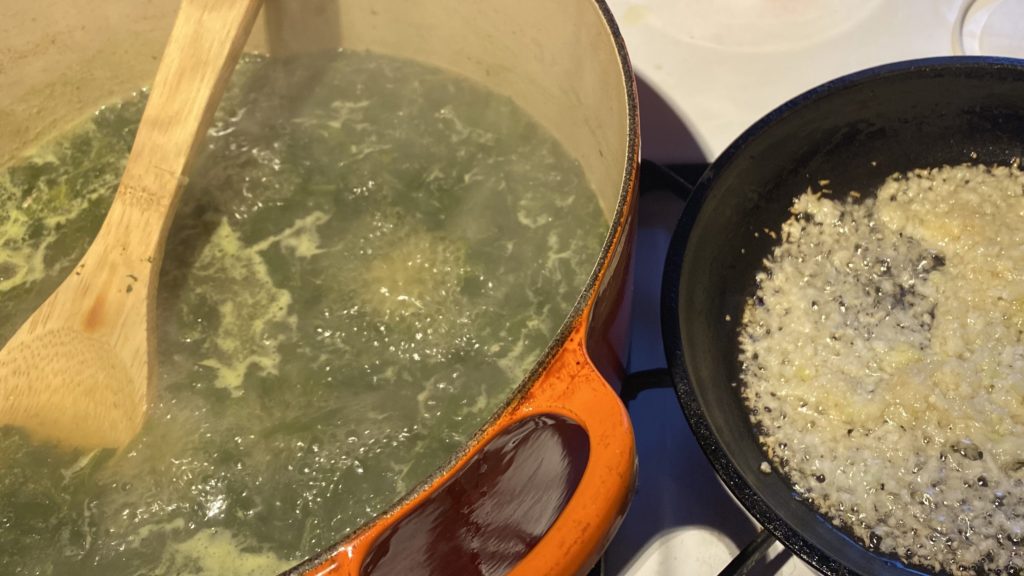
I’ve also read that in Egypt, the takleya would be made using samna or clarified butter; not unlike the ghee used in tadkas of Indian cuisine. Just one more example of how connected our cuisines are, across continents and over thousands of years.
